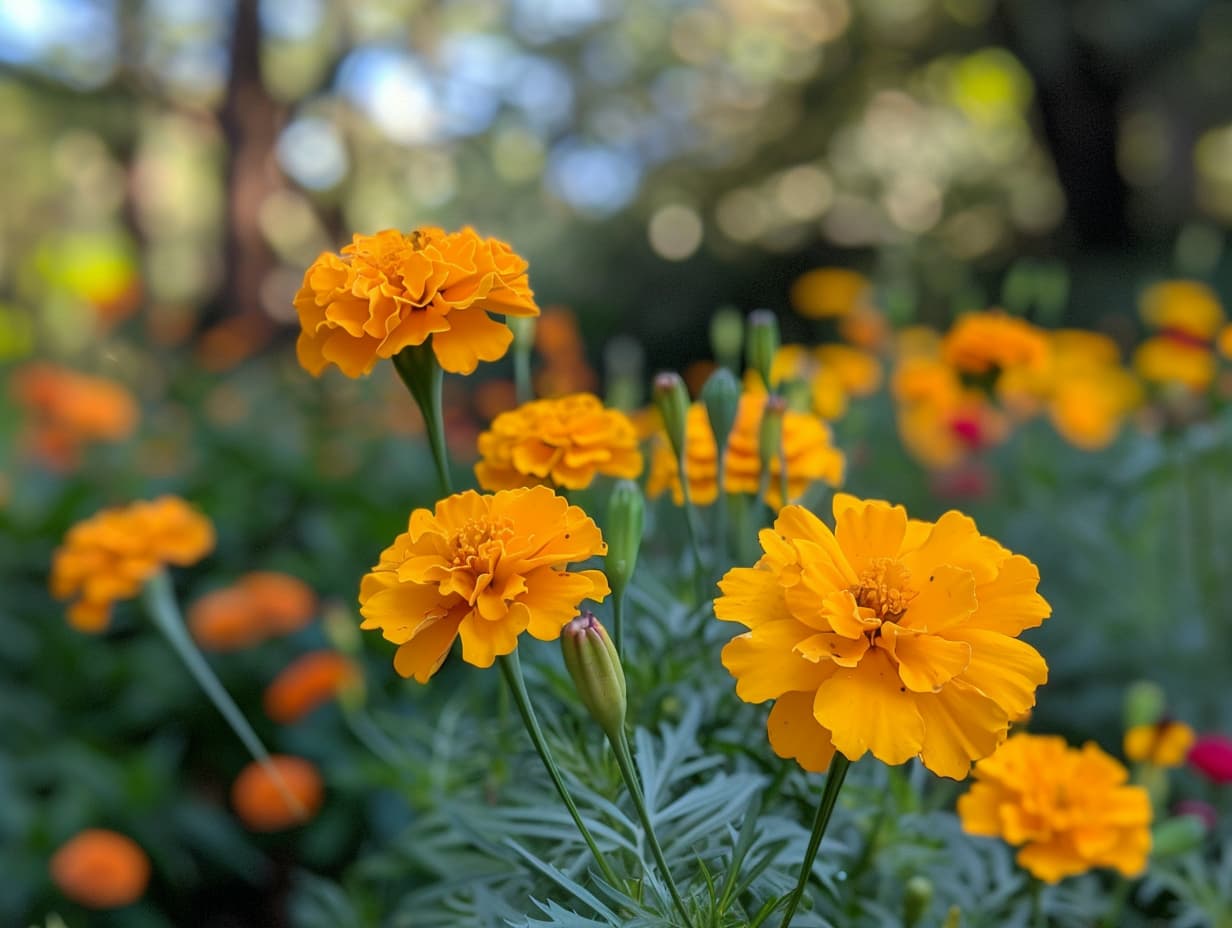When you buy products via links on our website, we might receive an affiliate commission. Learn more
Discover the Magic of Self-Seeding Plants

For those seeking a low-maintenance yet beautiful garden, self-seeding plants are the answer. These incredible plants not only bring charm to your garden with minimal effort but also support pollinators and wildlife.
In this blog post, we explore the benefits of self-seeding plants, highlight specific examples, and provide tips for incorporating them into your green space.
Self-Seeding Provides Effortless Beauty and Free Plants
Imagine a garden full of vibrant blooms and lush greenery with little effort. Self-seeding plants make this possible. These resilient plants propagate on their own, saving you time and money on new plants each year.
As one gardener from a popular gardening channel puts it:
By allowing plants to self-seed, you create a dynamic and evolving garden landscape that renews itself each season without much intervention.
Self-Seeding Plants Are a Haven for Wildlife
Self-seeding plants not only enhance your garden’s beauty but also play a crucial role in supporting biodiversity. Their diverse blooms provide a constant source of nectar and pollen for bees, butterflies, and other pollinators.
Additionally, their foliage offers shelter and nesting sites for insects and small animals. By incorporating self-seeders, you're contributing to a healthier ecosystem, which benefits not just your garden but the broader environment as well.
These plants help sustain local wildlife populations, promoting a balanced and thriving natural community.
Exploring a Variety of Self-Seeders
The world of self-seeding plants offers a wide range of options for every gardener. Here are some popular self-seeders:
- Alliums: These globe-shaped flowers add a burst of color in midsummer and are known for their striking appearance.
- Alchemilla mollis: A low-growing plant that carpets the ground and suppresses weeds, making it a perfect ground cover.
- Daisies: Cheerful blooms that brighten up any space with their classic white petals and yellow centers.

- Aquilegia: Delicate, bell-shaped flowers that add whimsy and charm to the garden.
- Borage: Beautiful blue flowers that attract pollinators, and its leaves are edible too.
- Cerinthe: Blue flowers and attractive foliage provide year-round interest and a touch of exotic flair.
- Crocosmia: Stunning but potentially invasive, so check local guidelines before planting.
- Cyclamen: Produces delicate, heart-shaped leaves and flowers in autumn and winter, adding off-season interest.

- Wild Gladioli: Adds historical and elegant touches to your garden with its striking flowers.
- Lychnis coronaria: Stunning pink flowers that self-seed readily and are easy to grow.
- Foxgloves: Tall spires of flowers that attract pollinators and add height to garden borders.
- Marigolds: Bright, cheerful flowers that add color and repel pests like aphids, beneficial for companion planting.

- Primroses: Early bloomers offering a cheerful sight in late winter and early spring.
- Smyrnium perfoliatum: Dramatic foliage but potentially invasive, so it's essential to manage its spread.
- Nigella: Also known as love-in-a-mist, these flowers are beautiful but not always reliable in self-seeding.
- Poppies: Vibrant flowers that often emerge after soil disturbance, adding a wild touch to your garden.

- Sisyrinchium: Produces clusters of creamy white flowers that are low maintenance and charming.
- Purple Toadflax: Valuable for caterpillars and features beautiful purple flowers.
- Verbena bonariensis: Tall stems with clusters of purple flowers adored by pollinators, adding height and structure to borders.
Tips for Success with Self-Seeders
While self-seeding plants are low-maintenance, understanding their preferences can enhance their success.
Here are some tips to get the most out of your self-seeders:
- Create a Smart Weeding Strategy: If you weed frequently, you might reduce the number of self-seeders in your garden. Learn to recognize the seedlings of your self-seeding plants to avoid pulling them out mistakenly.
- Observe Growth Patterns: Observe where these plants thrive naturally in your garden. Self-seeders often find their preferred microclimates and soil conditions.
- Prepare the Soil for Growth: Although self-seeders are resilient, providing well-prepared soil can enhance their growth and blooming.
- Regulate Invasive Species: Research local regulations to avoid planting invasive species. Some self-seeders can become overly aggressive in certain climates and conditions.
- Do Selective Thinning: Allow some seedlings to mature while thinning out others to prevent overcrowding and ensure healthy growth.
- Focus on Seasonal Care: Some self-seeders benefit from seasonal care such as deadheading to prolong blooming and to manage where and how much they spread.
